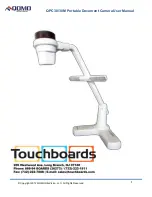
Photomicrography with
OPERATION
35 mm SLR cameras
Image section/Exposure functions
Carl Zeiss
B 40-046 e 03/99
3-5
The film cuts must always be performed as
stipulated in DIN 4536 or ISO 1977 (also see Fig.
3-1).
•
The film should be cut so that none of the
perforation holes are cut open.
•
The film cut must be 7...9 perforation holes
long and it must be parallel to the film edge.
•
The edges should be rounded to ensure that
the film does not get caught at the mouth of
the cartridge or at parts of the cassette.
•
The end of the film must be cut with a straight
edge and adhered to the film spool with a
piece of adhesive tape.
•
Avoid overly long film, as some cartridges
cannot be used for 36 frames or for every film.
This could damage the film advance
mechanism in the film cassette.
3.2.4
Exposure Correction Depending on the Microscopy Technique
Exposure corrections may be required, depending on which microscopy technique is used. The following
values are standard in photomicrography:
Microscopy technique
Correction
value
Extension
factor
Brightfield
- Few or very small dark structures on a very bright background
+2
Factor 4
×
Brightfield
- Dark structures on a bright background
+1
Factor 2
×
Phase or interference contrast
0
Factor 1
×
Darkfield / Fluorescence
- Many bright structures on a dark background
-1
Factor 0.5
×
Darkfield / Fluorescence
- Bright structures on a dark background
-2
Factor 0.25
×
7 ... 9 P
23 mm
+0
-5
Fig. 3-1
Use of bulk film
















































